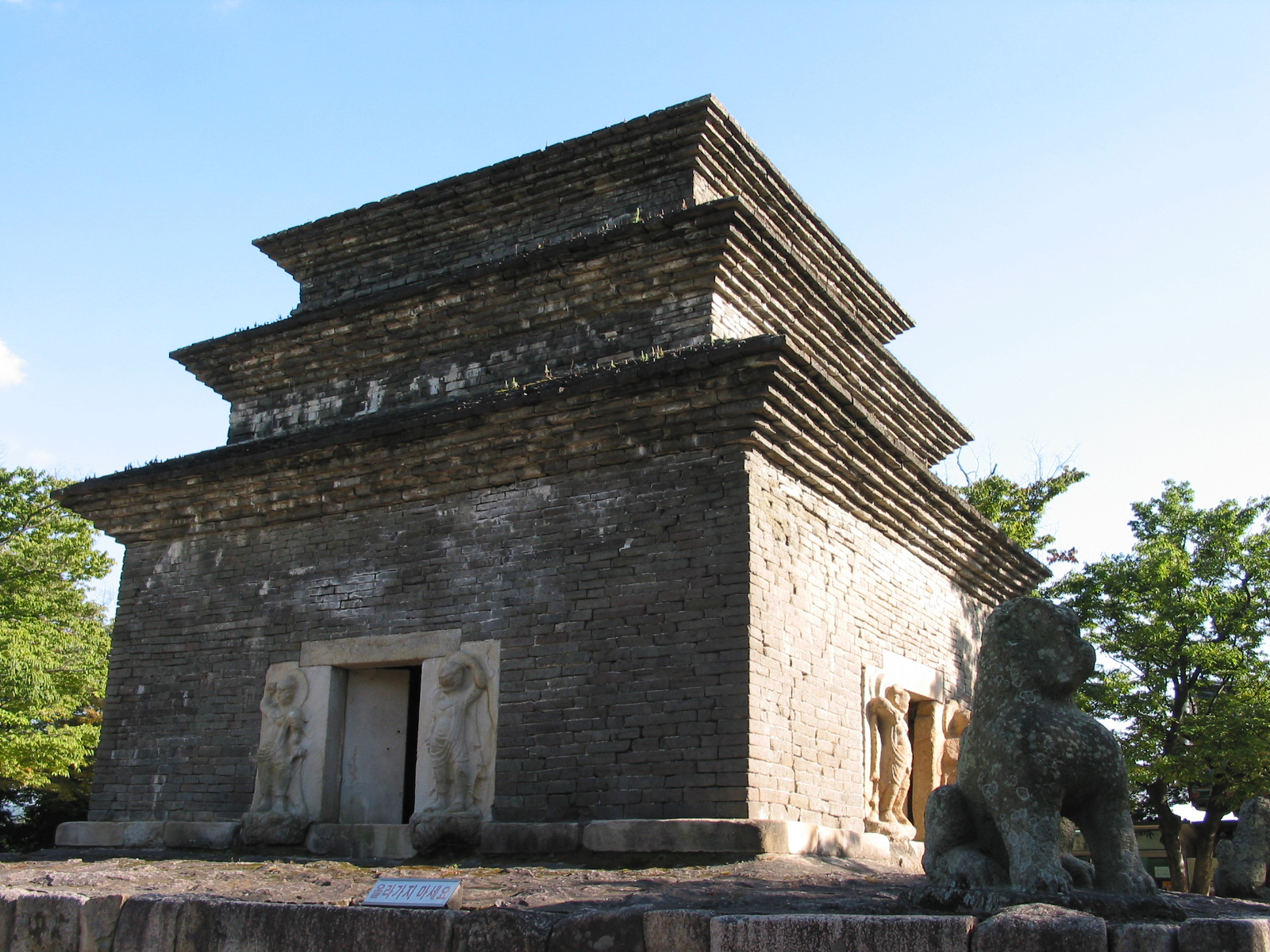- Bunhwangsa
Infobox Korean name

The Bunhwangsa Pagoda.
hangul=분황사
hanja=芬皇寺
rr=Bunhwangsa
mr=Punhwangsa|Bunhwangsa (literally "Fragrant Emperor Temple") is a temple complex from the Old
Silla era of Korea.Asian Historical Architecture [http://www.orientalarchitecture.com/kyongju/bunhwangsaindex.htm] ] The temple is recorded to have been built in 634 under the auspices of Queen Seondeok. Today the temple is still used by a small group of worshipers but in its heyday, the temple covered several acres and was one of the four main temples of the Silla Kingdom used by the state to ask the Buddha to bless the kingdom. The ruins ofHwangnyongsa Temple lay near by.National Treasure No. 30
A notable ruin at the temple is the Bunhwangsa Pagoda (Kr. Bunhwangsa Seoktap, literally "Stone Pagoda of Bunhwangsa"), the oldest dated pagoda from the Silla Kingdom. The pagoda is National Treasure of Korea No. 30 and was designated by the South Korean government on December 20th, 1962.Cultural Heritage Administration [http://www.cha.go.kr/english/search_plaza/ECulresult_Db_View.jsp?VdkVgwKey=11,00300000,37] ] The pagoda is based on prototypes from the
Tang Dynasty in China. However, unlike Tang pagodas which were made from brick, Silla architects used stones of black andesite cut like brick. Each story of the pagoda is progressively smaller in size and each story’s roof is made by placing bricks in a staircase-like fashion. Today, only three tiers of the pagoda remain. It is believed to have once stood seven or nine stories in height. Ancient records state the pagoda stood nine stories tall. Although once hollow, the collapsed stories of the pagoda have filled the center of pagoda with debris. An excavation and partial restoration in 1915 by the Japanese uncovered a sarira, or relic box, of the cremated remains of a priest hidden in between the second and third stories. Precious artifacts such as gold and stone ornaments, coins, scissors, and a needle were also found in the pagoda which indicated that a woman of royal blood, perhaps even Queen Seondeok herself, had once owned the objects. Each side of the pagoda has what may have once been doors into the interior of the pagoda. Two figures guard each doorway and are known as Geumgan-yeoksa (literally "Mighty Diamond Men") or Inwangsang, guardians of the Buddhist canon. Each corner of the one-step platform upon which the pagoda rests holds a guardian lion statue. Granite lotus blossoms also adorn the pagoda.A contemporaneous pair of stone pagodas were built at the
Baekje Mireuksa Temple and the Bunhwangsa Pagoda is often compared with them although those stone pagodas more closely imitated wood architectural styles.Also of note is the flagpole holder which survives from the Silla era.
References
See also
*
Queen Seondeok of Silla
*Hwangnyongsa
*List of Korea-related topics
*Mireuksa
*Korean Buddhist temples
*Korean Buddhism
*National treasures of Korea
*National treasures of North Korea External links
* [http://www.orientalarchitecture.com/kyongju/bunhwangsaindex.htm Oriental Architecture: Bunhwangsa Temple]
* [http://www.cha.go.kr/english/search_plaza/ECulresult_Db_View.jsp?VdkVgwKey=11,00300000,37 Bunhwangsa Seoktap]
Wikimedia Foundation. 2010.
